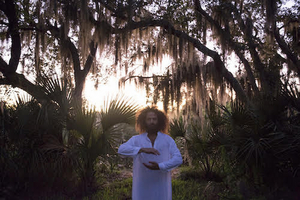Briars of North America Announces New LP on Brassland
They have also released their new single, 'Sala.'

Today Briars of North America announces its new album, Supermoon and shares "Sala," the first single/video sung in a language of the group's own invention called H'reh. You can pre-order the album here and watch the video.
Briars of North America work at their own pace, with release plans guided more by equinoxes and solstices than any conventional music industry wisdom. The core trio includes two long lost cousins and a friend. Their new album Supermoon exists at the crossroads of ambient, indie and so-called new music - delivered with the precision of chamber music, the emotional transparency of folk, and the weight of ritual. It's the band's first release on the Brassland label and will be released on June 18.
Jeremy and Gideon first began making music together as Briars of North America in 2009 (a sister band to the Thistles of North America, which never made it out of the aughts). Greg Chudzik entered the Briars orbit soon after. A first-call classical and new music bassist, Greg is also a member of the Signal and Talea ensembles and has collaborated with influential contemporary music composers such as Steve Reich and Pierre Boulez and independent-minded outsiders such as Dan Deacon and Radiohead's Johnny Greenwood.
Jeremy and Gideon have also worked in an intriguingly diverse range of settings, often with historically significant collaborators. Hailing from the hills of Vermont's Northeast
Kingdom, Gideon is a student of traditional and ancient forms of singing from places such as the Caucasus, the Mediterranean, and the rural US. He has performed as part of the Bread and Puppet Theater, and recently became a company member with downtown legend Meredith Monk.
"I play music because it draws together all the disintegrating strands of life into something palatable, comprehensible, moving," says Jeremy. "Music conjures the spirit behind both suffering and joy and holds it for a second, a unique singularity in an expanding cosmos. Plus, it's a good way to spend time and communicate with people. If we can get people to dance or cry, it feels like we've been in deep conversation, even if we would have nothing to say to each other in normal life. We aspire to create music that exists in a ceremonial space, where emotions crystallize and structures like time and emotion become malleable."
Listen here:
Comments
Videos

